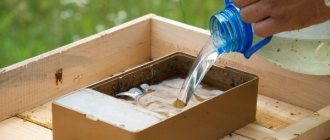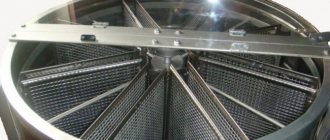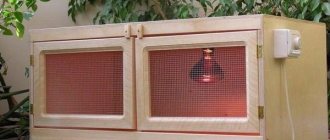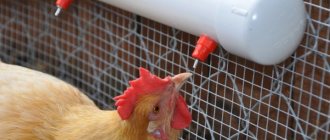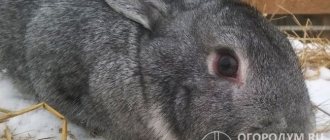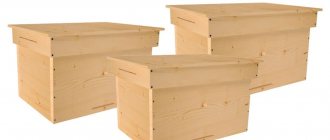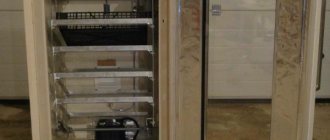Design Features
The Ukrainian hive is one of the most popular among beekeepers. Its structure is closest to the natural living conditions of bees, so they feel comfortable in it. The prototype of the Ukrainian hive was logs - houses for honey-bearing insects, which were made from logs by residents of Central Europe until the 19th century. The first beehive, which was later called Ukrainian, was made in the 1870s. Pole Kazimir Levitsky. Today, somewhat simplified designs are used.
A horizontal hive with a high frame is a simple rectangular structure containing from 16 to 24 frames. It has a roof and a bottom that cannot be removed. If necessary, it is separated by diaphragms and also additionally insulated. The main generally accepted frame dimensions are 435x300 mm.
Did you know? The domestication of bees occurred about 5-6 thousand years ago. People housed honey insects in primitive hives made of rods and boards, or in clay vessels.
- The design of the lounger has a number of advantages:
- ease of use;
- comfortable keeping of bees at any time of the year;
- minimal human intervention in the activities of honey insects;
- the possibility of keeping two bee families or one family with a nucleus in one hive;
- ease of making with your own hands;
- no additional extensions;
- one frame size.
- Among the disadvantages of the described design it is worth mentioning:
- Possibility of use only in small stationary apiaries;
- large dimensions;
- non-demountable design;
- inconvenience when staying in a winter shelter;
- insufficient air exchange during wintering;
- difficulties in growing families.
Drawings and dimensions
Many novice beekeepers cannot always buy the necessary hives, which is why they often think about making them themselves. And the main thing in this process will be the correct drawing and the exact indicated dimensions of the future bee house. It is best to choose drawings that have been verified on special beekeeping sites or from professionals. Not only the life of the bees, but also a good honey flow and honey harvest will then depend on the right hive.
We present to your attention a drawing with the dimensions of a Ukrainian hive-lounger
When building, be sure to take into account the exact dimensions of the hive. For example, the standard Ukrainian one has a body 686 mm long, 381 mm wide and 507 mm high. Don't forget about the wall thickness. The front and back must have at least 33 millimeters, the sides and bottom - 28 millimeters. The walls and bottom must be assembled separately, fastened with slats and glue. In the right wall there is an vent 115 millimeters high. Rebate – 6 by 16 millimeters. Detailed dimensions are indicated in the drawings.
Rules for keeping bees in Ukrainian hives
In hives with narrow frames, when keeping two families or a family with a nucleus, in the spring it is necessary to provide them with a lot of food - about 8-10 kg per family, and the nests should be well insulated with pillows, mats, and paper.
It is important to take measures to prevent members of one family from ending up in another. To do this, strong families are first released. After they return to the hive, the entrances are closed and members of the weak family are released for the spring flight.
The nest is expanded once. The expansion should be done at the time the queen lays eggs. The procedure is carried out with light brown honeycombs. If there are 7-8 combs of brood, all combs must be moved to the wall located on the opposite side of the entrance. The space that is freed up should be filled with frames with drying material and wax in an amount of at least 5 pieces. To restore the normal position of the nest, honey insects will build honeycombs on the foundation, and they will not have time to swarm. Newly built combs are placed closer to the center of the nest. Old honeycombs are gradually moved closer to the edges.
Important! Before inserting frames with drying material, it is necessary to wet them in warm water.
To avoid swarming, it is necessary to divide the nest into 2 halves with two or three frames of dry land. Noticing this, the queen will try to reunite the nest by filling the comb with eggs. When the honey yield level exceeds 2 kg, the hive is supplemented with an extension with 10–20 frames. When the nest becomes crowded, the family should be moved to a separate hive.
How to do it yourself?
The rather simple design of this hive allows almost anyone who wants to build it with their own hands. How? Having a drawing and exact dimensions, it is important to remember the sequence. For example, the body must first be manufactured. It, as you know, consists of a bottom, a roof and four walls. The front and back walls are made of three boards with a thickness of about 40 millimeters. After preparing all the boards for the body, they are assembled into a panel, tongue and groove. The side walls are made of four boards, which are 365 millimeters long, 139 millimeters wide, and 40 millimeters thick.
When preparing parts, do not forget to make allowances for scrap and trimming. They should be approximately 20 in length, 10 in width and 5 millimeters more in thickness. You should then choose a suitable frame for your home-made hive.
Advice from experienced beekeepers
To make keeping bees in Ukrainian hives comfortable for both the owner and the insects, you should follow the recommendations of experienced beekeepers:
- Extend the expansion in 2-3 times: with 6-7 frames with brood, deliver 2 frames with honey and 2 with artificial foundation; after filling them, add 4-5 frames, 3 of which with foundation; if necessary, add the required number of frames before honey collection.
- Expanding the nest by dividing it into 2 parts should only be done in a strong family and in the absence of the threat of cold weather.
- Before the main honey collection, it is necessary to regroup the frames by concentrating all the frames with open brood and the queen near the entrance, and the combs with printed brood - in the depths of the nest.
- It is not necessary to equip hives with extensions if the colony begins to swarm and lays queen cells on the combs.
- To save labor during the late honey harvest, it is necessary to form a temporary layer. Formation is started after the family has grown 11-12 frames, 8-9 of which will be occupied by brood.
- To prevent swarming, you need to use various methods: assistant queens, the Chaikin method, loading the bees with work, etc.
So, Ukrainian hives are simple structures for keeping two bee colonies or one colony with a nucleus. They are easy to use for the beekeeper and comfortable for the bees to live in.
Did you know? The most ancient remains of a bee, which have been found by paleontologists today, date back to a period of 100 million years ago. They were dug up in Burma. The insect was a transitional form from the predator wasp to the pollinating bee.
Reviews
As they say, beekeeping is serious business. Analyzing the reviews, it is worth saying that every beekeeper chooses a home for his pets according to his taste. Some people like Ukrainian bee hives, others, of course, find shortcomings. And this is understandable. But for the most part, all users of these hives only talk about the positive qualities of their design. For example, many people like the possibility of placing two bee colonies in them, and also the fact that insects tolerate wintering well in it. Some talk about the inconvenience during migration, since these hives were originally invented for stationary housing of bees. In any case, the popularity of Ukrainian hives is justified and proven by their many years of use.
Flaws
One of the disadvantages of this hive is the appearance of high air temperature and humidity at the top of the nest during the bribe period, which stimulates insects to swarm.
Another disadvantage is the need for the beekeeper to remove frames filled with honey products and put up new ones during the bribe period. This process greatly confuses the insects and prevents them from concentrating on collecting honey, which significantly affects the efficiency of the bee colony.
There is also a need to re-equip the honey extractor, since the frames are quite wide. To solve this problem, you can use an MP honey extractor, which has 2 reversible cassettes that can be adjusted and expanded according to any need, as shown in this video:
VIDEO
Manufacturing technology
The narrow-tall type of hive consists of the following elements: bottom, roof, nesting frame, removable frames. To make the bees winter more comfortably, it is worth connecting 2 buildings. The main feature of fastening narrow-high frames, which distinguishes this type of hive from many others, is strict perpendicularity with respect to the rectangular section. Each building is equipped with a separate entrance that is closed in the winter to retain heat inside the house.
The hive is made from high quality wood: stores and buildings are made of pine beams (3 cm thick), the internal walls of the housing are finished with birch plywood, and the external walls are lined with fiberboard boards (0.4 cm). The total wall thickness of a narrow-tall hive is approximately 3.7 cm. Foam insulation 3 cm thick can be added to the gap between the outer fiberboard upholstery.
Drawing of a narrow hive frame
We make the bottom of the hive of this configuration two-layer: the bottom layer is made of pine boards, and the top layer is made of birch plywood. In order to close the taphole if necessary, a sleeve is attached to the front, on the bottom, onto which a special taphole barrier is nailed. A metal ventilation grille is installed at the back of the bottom, which is necessary for ventilation in the cold season and cooling in the heat.
The narrow, high type of hive requires a flat roof; it consists of a roof, a box, a feeder and insulation. The roof body is made of wooden planks 6 cm high and 2 cm thick. The board shield should be 1.5 cm wide. We attach the feeder to the side, but if it is no longer needed, it can be removed and replaced with insulation. The roofing material is galvanized iron sheets. The roof is attached directly to the body using studs.
History of origin
The Ukrainian hive got its start in the mid-19th century. At this time, beekeepers actively began to switch from decks to frames. The hive was modified by Andrey Yakimov in 2014. The beekeeper improved the classic bed, increasing the number of frames from 24 to 32. He replaced the slotted entrances with round ones and made them in one row. Now there are usually from 5 to 9 holes along the entire length. This approach made it possible to interfere with the lives of insects with minimal losses.
Only soft tree species are selected for the hive, which allows for good heat retention inside. Alder, poplar, linden, and willow are suitable for this. The roof can be gable, pitched or even flat.
- About the Ukrainian beehive lounger with high and narrow frames, read a separate article
Design Features
To optimize space and obtain a large amount of honey, you should approach the organization of the apiary correctly. The design of the Vladimir hive allows this to be done. It is ideal for those who do not have a lot of time to care for insects and their hives.
In appearance, the lounger resembles a lying refrigerator or a large chest. The length of the hive is 1.2 m. Height is 50 cm, width is 45 cm. Frames for the structure measure 4.6 cm X 4.35. This allows you to use 1.5 times more practical area.
You can make a lounger yourself. In this case, use special materials. The main thing is to adhere to the dimensions indicated in the drawings.
Hive characteristics:
- weight from 35 to 50 kg;
- insulation – polystyrene foam or moss;
- wall width from 0.6 to 1 cm;
- frame -4.6 cm X 4.35;
- number of frames 32 pcs.;
- taphole diameter 50 mm.
The entrances should be located at a distance of 4.5 cm from the bottom of the wall. From the corners of the hive - 13 cm. The distance between the entrances should be 18.5 cm. The number of entrances with rotating valves is from 5 to 9 pieces. On average, 6 holes are usually made.
The fact is that quite a lot of beekeepers suffer from occupational diseases associated with their backs. This could be a hernia, pain in the lower part of the spine. This is due to frequent bending and heavy lifting. However, the lounger does not have magazines or housings, so there is no need to lift or carry it.
Having installed a hive once, you can leave them alone for several years. The maximum that will have to be lifted is the frames, which can weigh from 1 to 6 kg. The hive is installed on a stand of 30 cm. The height of the product itself is 50 cm. The total amount is the height of the desk. This allows the beekeeper to work in comfortable conditions. Therefore, bending over to hives standing at the same height is convenient.
The roof of the structure is supported on hinges. You can lift it with one hand without much effort. Inspection of bees is carried out without bending too much, which will help keep your back healthy. The bed usually contains 2 bee colonies: the main one and the spare one. This allows you to implement a variety of methods for keeping insects.
Forming honey cakes for 32 frames of the Vladimir hive allows you to collect up to 150 kg of honey from one structure. At the same time, the expenditure of effort and time is minimal. One hive can accommodate 5 bee layers at once. In addition, this design makes it possible not to keep spare hives in the apiary. If the swarm flies out, it is transplanted behind the partition.
